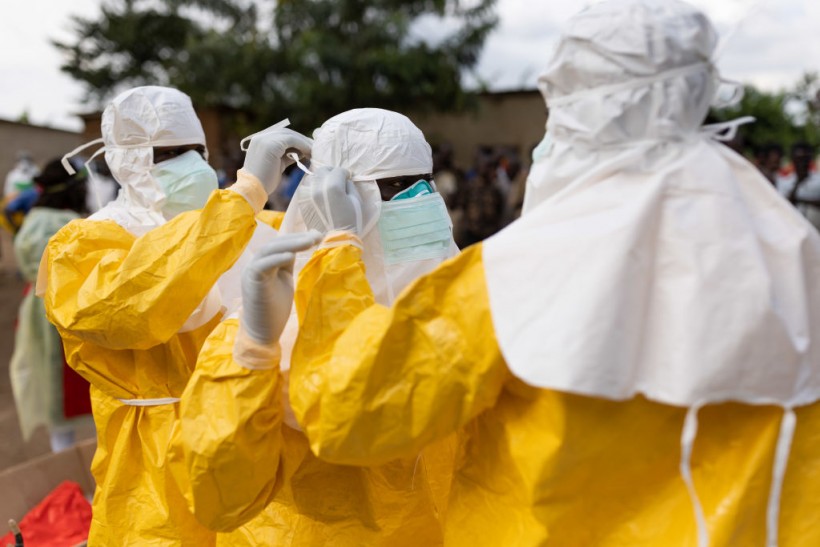A recent report found how the ebola disease reproduces and affects, the virus became rampant in sub-Saharan Africa. The findings can help prevent the virus.
According to a Centers for Disease Control and Prevention report (CDC), ebola is considered a rare disease, and anyone can suffer from infection when they become exposed to infected animals or people.
Understanding the ebola virus is crucial to offering new methods to prevent its spread and avoid a health emergency. In a report, researchers from the U.S. and Canada uncovered the reproduction of Ebola in people's bodies.
Deadly Ebola Reproduction

(Photo : by Luke Dray/Getty Images). The latest report discovered ways how the ebola virus reproduces, which can be helpful for prevention efforts. The Ebola virus can be life-threatening and cause a public health concern.
The research findings were published in the PLOS Biology journal, which consists of teams in different fields. With experimental and computational methods, the researchers managed to unlock the interaction of the virus (VP35 protein) and ubiquitin chains.
The study looked into the interaction of the virus with ubiquitin, a human protein. In this way, the researchers can unravel potential targets to prevent the virus, deepening their understanding of the virus.
"This discovery not only deepens our understanding of how the virus works but also offers a promising avenue for the creation of more effective therapies. In particular, it paves the way for the design of drugs capable of disrupting this interaction and slowing down viral replication," Professor Rafael Najmanovich, the study's co-author, said, as quoted in a report. Najmanovich is also from the pharmacology department of UdeM's medical.
The researchers analyzed how the virus can evade detection and infect people's bodies, including the complex workings of the virus.
The recent findings can contribute to fighting the deadly Ebola virus infections and provide new insights into effective treatments, particularly for poorer and vulnerable sectors.
Also Read: Avian Influenza Virus Threatens Wildlife Conservation Due to Spread Among Marine Animals, Birds
More Facts About the Ebola Virus
The report shows that the said virus was first found in 1976 in parts of Central Africa. People who have the ebola virus can feel the following symptoms:
- Loss of appetite
- Sore throat
- Fever
- Abdominal pain
- Gastrointestinal issues
- Weakness
- hemorrhaging or bleeding
- Skin Rash
- Red Eyes
In terms of transmission, the infection can spread through contact, after people develop the symptoms of the ebola virus. It can also be transmitted via blood or body fluids, like saliva and urine. Infected objects can also pass the virus on to people.
In addition, the World Health Organization's (WHO) key facts show that vaccines are already being developed to avoid the risk of some types of Ebola. WHO emphasizes that supportive care helps save people from death due to said diseases.
Community control and disease surveillance are important for infection prevention and avoiding widespread transmissions.
Related Article: Alaskapox: First Human Dies from Animal-Borne Virus in Kenai Peninsula, Infection
For more similar stories, don't forget to follow Nature World News.
© 2024 NatureWorldNews.com All rights reserved. Do not reproduce without permission.




![Roundworms with Short Memories 'Stop Forgetting' When Frozen or Given Lithium [Study]](https://1471793142.rsc.cdn77.org/data/thumbs/full/70295/280/157/50/40/roundworms-with-short-memories-stop-forgetting-when-frozen-or-given-lithium-study.jpg)
